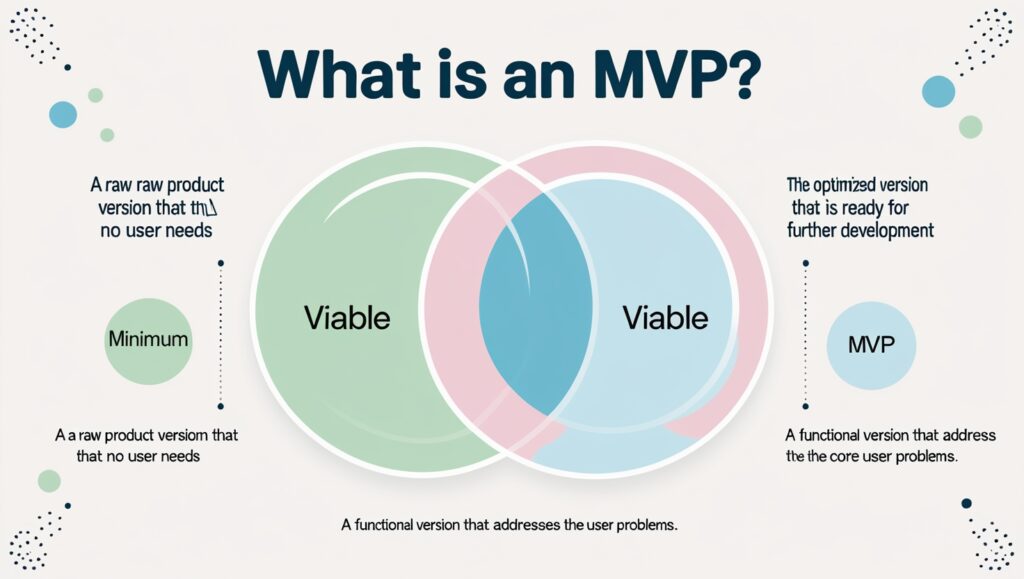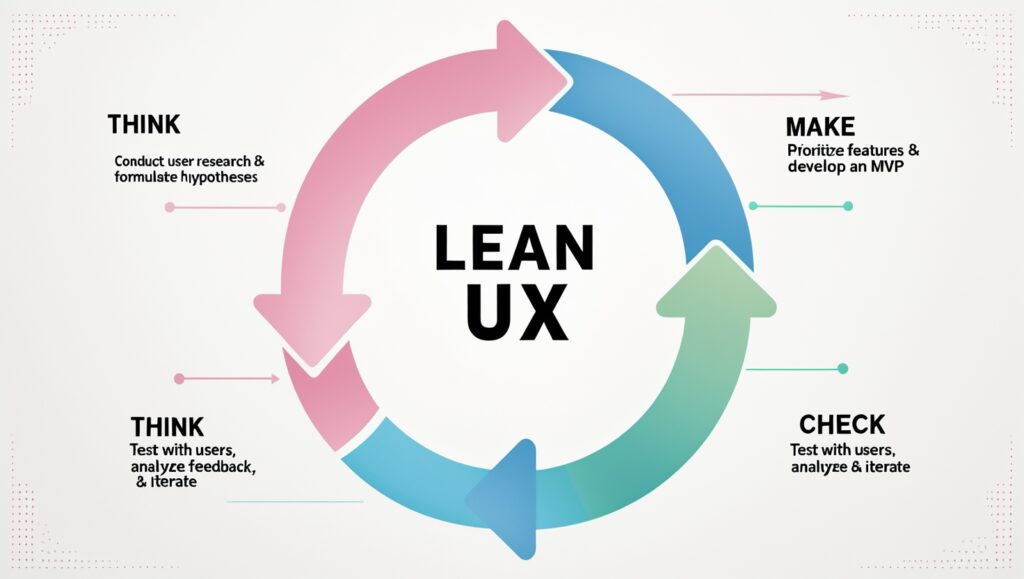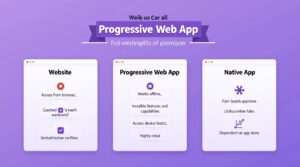click to get service View profile
Discover how to build a Minimum Viable Product for SaaS. Learn key steps, strategies, and best practices to quickly launch and test your product with minimal resources for maximum market impact.
In today’s highly competitive SaaS landscape, launching a fully polished product from day one is neither practical nor necessary. The smartest way to build a successful SaaS business is by starting with a Minimum Viable Product for SaaS. A Minimum Viable Product for SaaS is a streamlined version of your software that delivers just enough core features to solve a real user problem and validate your business idea with actual customers. By focusing on essential functionality first, you can quickly gather feedback, reduce development risks, and set a strong foundation for future growth.
Building a Minimum Viable Product for SaaS helps you avoid wasting valuable time, money, and effort on features that users may not even need. It enables you to gather crucial insights directly from real users, allowing you to refine and improve your product based on real-world feedback rather than assumptions. In this article, we’ll walk you through a detailed step-by-step process for building an effective Minimum Viable Product for SaaS — from identifying the right problem to solve, designing a user-friendly solution, prioritizing must-have features, selecting the right technology stack, launching quickly, and continuously improving through user feedback.
If you want to save months of development, minimize risks, and build a SaaS product people truly want, mastering MVP development is your first and most important step.
What is a Minimum Viable Product (MVP)?

A Minimum Viable Product for SaaS is the most streamlined version of a software product that still delivers meaningful value to its users. It contains only the essential features necessary to address the core problem your SaaS solution aims to solve. The primary goal of building a Minimum Viable Product for SaaS is to launch quickly, test the concept in a real-world environment, and gather insights from actual user interactions — all while using minimal time and resources.
The term “Minimum Viable Product” breaks down into 2 parts:
- Minimum: The product includes the bare essentials — the smallest set of features needed for it to be useful.
- Viable: Even though it’s minimal, it must be usable, dependable, and offer real value to the user.
Instead of building a fully-featured product from the start, the MVP approach focuses on building just enough to collect user feedback and validate assumptions. This helps product teams avoid wasting time and money on features that users might not want or need.
Benefits of building an MVP for SaaS products?
Launching a new SaaS product can be a complex and resource-intensive process. Building a Minimum Viable Product (MVP) helps you start small, validate ideas early, and scale with confidence.
Here are the benefits of minimum viable product to your SaaS development journey:
- Increased Development Efficiency: By narrowing the focus to only the most essential features, your team avoids overbuilding and saves time. This lean approach makes development cycles shorter, easier to manage, and less prone to delays caused by unnecessary features.
- Lower Investment Risk: An MVP lets you test your product idea with real users before making a large financial or time commitment. If the concept doesn’t gain traction, you’ve lost less — and if it does, you can invest further with greater confidence and direction.
- Easier funding: Investors want to see more than just an idea — they want proof of potential. An MVP shows your ability to execute, demonstrates that users find value in your solution, and provides early data that can support funding pitches.
- Greater Opportunity for Iteration: Releasing a basic version early means you can gather feedback from real users and adapt quickly. This feedback loop helps you understand user needs, fix usability issues, and shape future versions of the product based on actual behavior, not assumptions.
- Accelerated Market Entry: Launching a minimal version helps you enter the market quickly, start building a customer base, and generate early revenue. It gives you a competitive edge and valuable real-world insights while competitors may still be developing their full-feature products.
Types of Minimum Viable Products
When building an MVP, it’s important to recognize that not all MVPs serve the same purpose. They can vary in complexity based on your goals, timeline, and available resources.
Broadly, MVPs fall into two main types:
- Low-fidelity: This type is designed for quick validation of a business idea or new feature with minimal time and effort. It helps you gauge customer interest and understand market needs before committing to full-scale development. A low-fidelity MVP is ideal for defining the core functionalities your product should include.
- High-fidelity. This is a more advanced and detailed version of your product, often developed after validating the idea with a low-fidelity MVP. It’s closer to a ‘minimum marketable product’—something that’s functional enough to launch to early users and start generating real-world feedback and traction.
Developing a Minimum Viable Product with a Lean UX Approach

Lean UX is a design approach that focuses on minimizing unnecessary work and accelerating the development of a Minimum Viable Product for SaaS to collect rapid user feedback. It transforms the design process into a hypothesis-driven cycle, where every decision is validated by real user insights before expanding or scaling the product further.
Let explore the lean UX process to creating a minimum viable product as below!
1. Think
In the “Think” phase of the Lean UX approach, the focus is on deeply understanding the user, the business context, and the problem space — all essential to shaping a meaningful and focused MVP.
Instead of immediately jumping into feature development, this phase helps teams validate whether there is a real user need worth solving. By conducting user research (through interviews, surveys, and analytics), performing competitive analysis, and aligning with stakeholders, teams gather the essential insights required to define a strategic foundation for building a successful Minimum Viable Product for SaaS.
Deliverables:
- Problem statement
- User personas & journey maps
- Hypotheses & assumptions
- Success metrics & KPIs
2. Make
In the “Make” phase, your MVP starts to take shape. Leveraging insights and hypotheses formed in the “Think” phase, the team begins to ideate, sketch, prototype, and build a functional version of the product — just enough to validate with users.
This step is not about building a complete product. It’s about designing a lean, focused MVP that tests core assumptions, delivers value to users, and helps you gather meaningful feedback quickly.
During this stage, you should:
- Ideate on Value Addition: Brainstorm possible solutions that deliver immediate value to users. Focus on the smallest feature set that can solve the core problem you’ve identified. Ask: What is the one thing users absolutely need to experience the value of this product?
- Prioritize MVP Features: Not every idea or feature belongs in the MVP. Use tools like the MoSCoW method (Must-have, Should-have, Could-have, Won’t-have) or Impact vs. Effort matrices to decide which features to include. Prioritize only what’s essential for learning and validation, and leave everything else for future iterations.
- Map Out User Flow: Design a clear and minimal path for users to achieve their goal. This includes defining the key interactions and touchpoints within the MVP — from onboarding to completing the primary task. A simplified user journey ensures clarity, usability, and focused testing.
Deliverables:
- Wireframes & mockups
- Interactive prototypes
- MVP with core functionality
- Design specifications for usability testing
3. Check
In the “Check” phase, the primary goal is to validate whether the Minimum Viable Product for SaaS effectively addresses user needs and solves the intended problem. This is done by testing the product with real users and gathering both qualitative insights (through interviews or observations) and quantitative data (through usage metrics, surveys, or A/B testing).
The team analyzes the feedback to identify what resonates, what causes friction, and what needs improvement. This phase is critical for learning — not just about the product, but about user behavior and expectations.
If the core assumptions behind the Minimum Viable Product for SaaS are validated, the team can move forward with confidence. If not, the feedback is used to iterate, refine the MVP, or pivot as necessary. This continuous feedback loop ensures smarter product decisions before significant time and resources are invested in full-scale development.
Deliverables:
- Usability testing reports
- User feedback & insights
- Iteration plans & design refinements
- Data-driven recommendations
- Validated hypotheses
Final thoughts
Building a Minimum Viable Product for SaaS is not just about launching a product quickly, but about creating a smart, data-driven foundation for future success. By focusing on solving a core user problem with minimal features, you can test your ideas, validate assumptions, and gather crucial insights without over-investing time and resources. This approach not only reduces risks but also ensures that your product evolves in alignment with real user needs.
Whether you’re just starting or looking to refine your current product, the MVP process will help you build smarter, scale efficiently, and move forward with confidence. Remember, the key to a successful Minimum Viable Product for SaaS is constant iteration, learning from feedback, and staying agile as you grow.
Frequently Asked Questions (FAQs)
1. How long should it take to build an MVP?
The development of a Minimum Viable Product (MVP) typically takes between 2 to 6 months, depending on the complexity of the idea, the size of the development team, and the resources available.
2. POC vs MVP vs Prototype: What’s the Difference?
While POC, MVP, and Prototype are all early-stage development tools, they each serve different purposes. A POC (Proof of Concept) is designed to demonstrate whether a specific idea, technology, or feature is feasible. A prototype, on the other hand, is an early model or mock-up that visualizes how a product might look and function, often used to showcase the user experience without full functionality. An MVP (Minimum Viable Product for SaaS), however, is a functional version of the product that includes only the essential features needed to address initial user needs and gather valuable feedback.
3. What are minimum viable product examples of SaaS products?
Many successful SaaS companies began with simple Minimum Viable Products for SaaS focused on solving a clear user problem. For example, Dropbox initially created a basic explainer video demonstrating how their file-sharing technology would work, using it to gauge user interest before building a full platform. Airbnb’s first MVP for SaaS was a simple website that allowed the founders to rent out their own apartment to test the idea. Similarly, Buffer, a social media scheduling tool, started with just a landing page explaining the concept and a signup form to measure interest.

